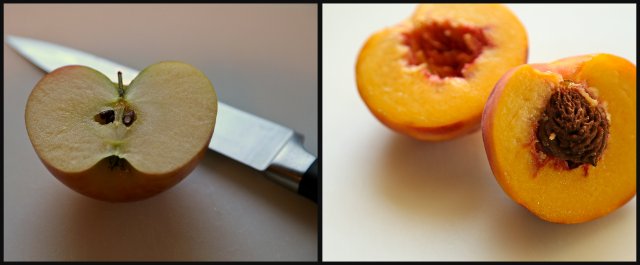As I was cutting up fruit this week, I wondered why some of the fruit had several small seeds (like the apples) while others had just one larger pit (like the peaches). I pondered this conundrum while I finished cutting up fruit knowing it is the kind of question that drives Clay crazy.
A little internet research provided an answer. ALL fruits have seeds. Some fruit - apples, grapes and pears, for example - have several/many small seeds and other fruit - peaches, plums and apricots, for instance - have a single seed encased in the pit which protects the seed until conditions are right for it to start to grow. Different plants require different growing conditions - soil pH, sun vs. shade, etc.
Fruit seeds are spread when animals eat the fruit. If the fruit has many small seeds, the animal typically eats the entire fruit and the seeds are eliminated in the animal's poo (called scat for those who are really interested in that kind of thing) which provides fertilizer for the fledgling seedlings. Many seeds are needed since the survival rate is low for unprotected seedlings in the wild.
On the other hand, if the fruit has a pit, the animal eats the fleshy part of the fruit and leaves the pit. As the pit is exposed to the elements and breaks down, the seed inside begins to grow while being protected by the decomposing pit which becomes fertilizer for the seedling.
Maybe Clay is right. Maybe I do have too much time on my hands.


You most definitely have too much time on your hands!
ReplyDeleteLOL! Or fewer kids...
DeleteBoy I'm surprised Richard didn't jump on the "too much time on your hands" comment ;)
ReplyDeleteI think he knows better ;-)
Delete